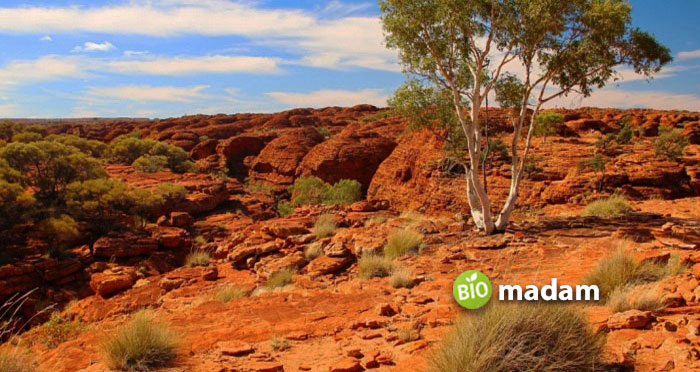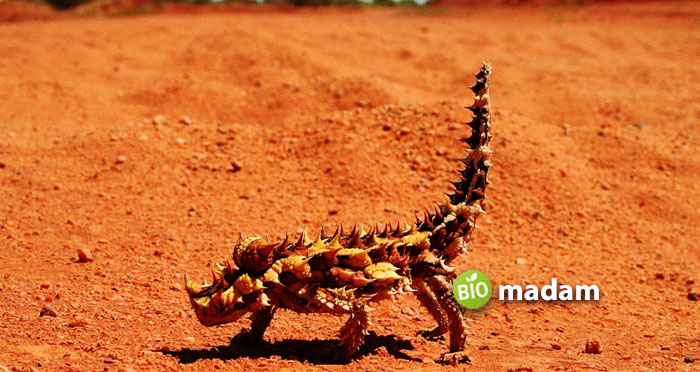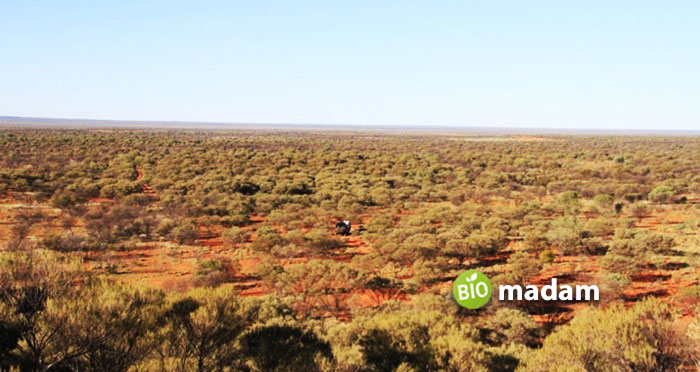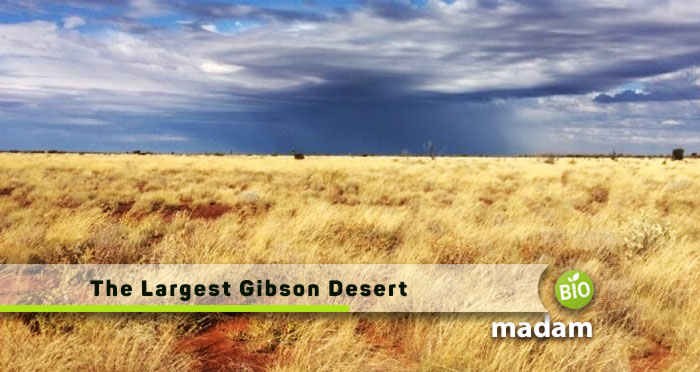Gibson Desert, Australia’s biggest desert! Imagine a vast and wild place right in the heart of the country. It’s not just sand and heat—this desert has so much more to share. From giant sand dunes to old rocks and unique plants and animals, the Gibson Desert is like no other.
In this guide, we’ll explore this massive desert together. You will get to know everything about it, including where it is, what the weather is like, the cool plants and animals that call it home, and how people are taking care of this special place. Get ready for an adventure as we dive into the wonders of one of the largest deserts of Australia – the Gibson Desert, discovering its secrets and stories along the way!
Where is the Gibson Desert?
Location
The Gibson Desert location is in Western Australia, but many wonder, “How big is the Gibson Desert?” Well, this huge desert covers an area of approximately 156,000 square kilometers. It is bounded by the Great Sandy Desert to the northwest, the Tanami Desert to the northeast, and the Little Sandy Desert to the south. The desert is situated in the heart of the Australian continent and is one of the most remote and isolated regions in the world.
Climate
The Gibson Desert has a harsh and arid climate, with temperatures that can reach up to 50 degrees Celsius during the day and drop to as low as -5 degrees Celsius at night. The region receives very little rainfall, with an average annual precipitation of less than 200 millimeters. Most of the rainfall occurs during the summer months, between December and March.
Terrain Features
The terrain of the Gibson Desert is characterized by vast expanses of red sand dunes, rocky outcrops, and salt lakes. The sand dunes can reach heights of up to 200 meters and are constantly shifting due to the strong winds that blow across the region. The rocky outcrops are composed of ancient granite and sandstone formations that have been eroded over millions of years. The salt lakes are scattered throughout the desert and are an important source of water for the local wildlife.

Ecology
Flora
The Gibson Desert is home to a variety of plant species, many of which are adapted to the harsh desert environment. The dominant plant species in the region are spinifex grasses, which are well-adapted to arid conditions. Other common plant species include acacia trees, desert oak, and mulga. These plants have adapted to the harsh desert conditions by developing deep root systems and storing water in their tissues.
Fauna
The Gibson Desert is home to a diverse range of animal species, including reptiles, birds, and mammals. Some of the most notable animal species found in the region include the thorny devil, bearded dragon, and perentie lizard. Other common Gibson Desert animal species include kangaroos, wallabies, and echidnas. Many of these animals have adapted to the harsh desert conditions by being nocturnal, burrowing underground, or having specialized physiological adaptations to conserve water.
Overall, the Gibson Desert is a unique and diverse ecosystem that is home to a variety of plant and animal species that have adapted to the harsh desert environment.
Conservation
Protected Areas
The Gibson Desert is home to several protected areas, which are managed by the Western Australian government. These areas include the Gibson Desert Nature Reserve, the Kiwirrkurra Indigenous Protected Area, and the Great Victoria Desert Nature Reserve. These areas were established to protect the unique flora and fauna of the region, as well as the cultural heritage of the indigenous people who have lived there for thousands of years.
The Gibson Desert Nature Reserve covers an area of over 1.5 million hectares and is home to a diverse range of plant and animal species, including the spinifex grass, the mulga tree, and the red kangaroo. Visitors to the reserve can explore the area on foot or by four-wheel drive but must obtain a permit from the Department of Biodiversity, Conservation, and Attractions before entering the reserve.
Environmental Threats
Despite its protected status, the Gibson Desert is still facing a number of environmental threats. One of the biggest threats is the invasion of non-native plant species, which can outcompete native plants and disrupt the delicate balance of the ecosystem. Feral animals such as camels and rabbits are also a problem, as they can damage vegetation and compete with native animals for resources.
Climate change is another major threat to the Gibson Desert, with rising temperatures and changing rainfall patterns affecting the region’s flora and fauna. The desert is already one of the driest places on earth, and any further reduction in rainfall could have devastating consequences for the ecosystem.
Efforts are being made to address these threats, with programs in place to control feral animals and manage invasive plant species. The Western Australian government is also working to reduce greenhouse gas emissions and promote sustainable land management practices in the region. However, much more needs to be done to ensure the long-term survival of the Gibson Desert and its unique biodiversity.

Human Presence
Indigenous Communities
The Gibson Desert is home to several indigenous communities, including the Pintupi, Warlpiri, and Martu people. These communities have lived in the area for thousands of years and have a deep connection to the land. They have a rich culture and traditions, including their knowledge of the plants and animals that inhabit the desert.
Despite the harsh conditions of the desert, these communities have adapted to the environment and have developed sustainable ways of living. They rely on hunting and gathering for food and use traditional methods to find water.
Resource Exploitation
The Gibson Desert has been the site of various resource exploitation activities, including mining and oil and gas exploration. These activities have had a significant impact on the environment and the indigenous communities that live in the area.
Mining activities have led to the destruction of sacred sites and have caused pollution of the waterways. Oil and gas exploration has also had a negative impact on the environment, with the potential for oil spills and other accidents.
The Australian government has implemented regulations to mitigate the impact of resource exploitation activities on the environment and the indigenous communities. However, there is still a need for ongoing monitoring and enforcement to ensure that these regulations are being followed and that the Gibson Desert is being protected for future generations.
Tourism and Exploration
Tourist Attractions
The remote and rugged beauty of the Gibson Desert has begun to attract adventurous tourists seeking a unique and off-the-beaten-path experience. While tourism is limited due to the challenging conditions, intrepid travelers can explore the vast sand dunes, witness stunning sunsets over the desert landscape, and learn about the rich cultural history of the indigenous communities.
Exploration Challenges
Exploring the Gibson Desert is not for the faint-hearted. The vast distances, extreme temperatures, and lack of infrastructure make it a challenging undertaking. Travelers are advised to be well-prepared, with sufficient water, navigation tools, and communication devices. Four-wheel-drive vehicles are often essential for navigating the rough terrain.

Conservation Challenges and Efforts
Biodiversity Preservation
Conservation efforts in the Gibson Desert focus on preserving the unique biodiversity of the region. The introduction of measures to control invasive plant species and manage the impact of feral animals is crucial. Additionally, monitoring and research initiatives aim to better understand the delicate balance of the ecosystem and implement strategies for its long-term sustainability.
Climate Change Mitigation
Given the increasing threats posed by climate change, efforts are underway to mitigate its impact on the Gibson Desert. Sustainable land management practices, alongside broader initiatives to reduce greenhouse gas emissions, are critical for preserving the delicate ecological balance. Local and national authorities are working together to develop and implement strategies that address the challenges posed by a changing climate.
Future Outlook
While the Gibson Desert faces environmental challenges and ongoing human impacts, there is hope for its preservation. Collaborative efforts between indigenous communities, government bodies, and environmental organizations aim to strike a balance between conservation and sustainable development. By promoting responsible tourism, respecting cultural heritage, and addressing environmental threats, there is potential for the Gibson Desert to remain a unique and resilient ecosystem for generations to come.

As a freelance journalist, copywriter, and editor, Rachel Truman crafts compelling stories across travel, food, family, lifestyle, and B2B. With a keen eye for detail, Rachel specializes in creating engaging branded content, making every word an adventure

